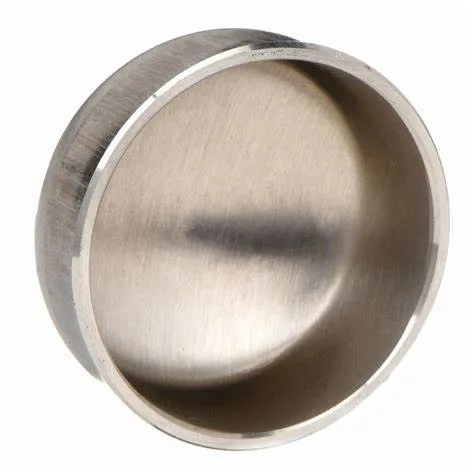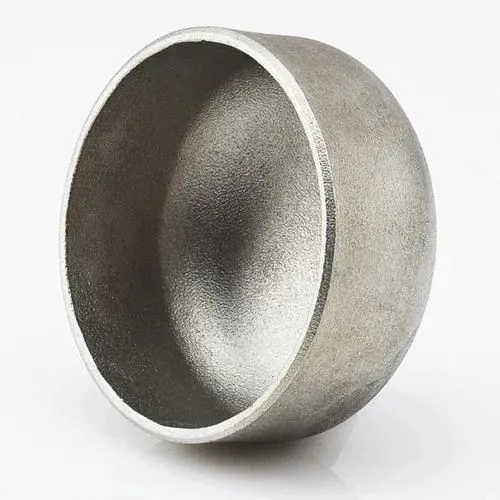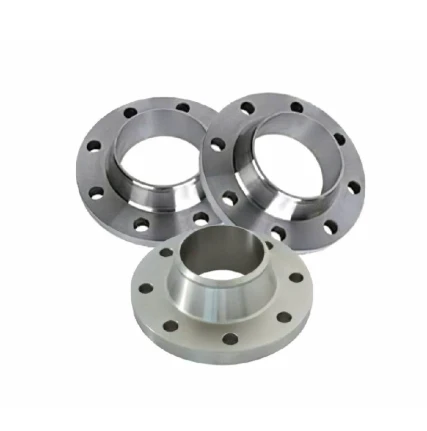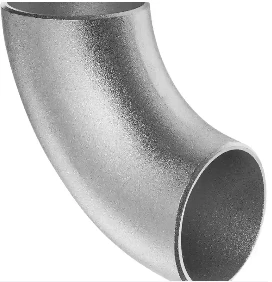JIS B2311은 배관 시스템에 사용되는 캡을 포함하여 맞대기 용접 파이프 피팅에 적용되는 일본 산업 표준입니다. 맞대기 용접 캡은 파이프 끝을 닫고 누출이나 오염을 방지하는 밀봉 기능을 제공하는 역할을 합니다. JIS B2311 맞대기 용접 캡에 대한 소개는 다음과 같습니다.
- 1. JIS B2311 Standard:
- - JIS B2311 표준은 배관 시스템에서 캡을 포함한 맞대기 용접 피팅의 설계, 치수, 재료, 제조 및 테스트에 대한 요구 사항을 지정합니다.
- - 이 표준은 JIS 표준에 따라 생산된 캡이 품질 표준을 충족하고 다른 배관 구성 요소와 호환된다는 것을 보장합니다.
- 2. 맞대기 용접 캡:
- - JIS B2311에 따른 맞대기 용접 캡은 파이프 끝단을 안전하게 덮고 밀봉하여 배관 시스템을 보호하고 무결성을 유지하도록 설계된 피팅입니다.
- - 캡은 누출, 오염을 방지하거나 시스템 마감을 제공하기 위해 파이프 끝을 영구적으로 또는 일시적으로 폐쇄해야 하는 상황에서 사용됩니다.
- 3. 재료 및 구조:
- - JIS B2311 사양에 따른 맞대기 용접 캡은 탄소강, 스테인레스강, 합금강 등 다양한 재질로 제공되어 다양한 적용 요구 사항을 충족합니다.
- - 이 캡은 파이프 끝단에 용접할 때 견고하고 누출 없는 연결을 보장하기 위해 표준화된 공법을 사용하여 제조됩니다.
- 4. 신청 및 혜택:
- - 맞대기 용접 캡은 석유 및 가스, 화학 공정, 수처리 공장 등 파이프 끝부분을 안전하게 닫아야 하는 다양한 산업 분야에서 응용됩니다.
- - 캡은 환경 요소로부터 파이프 끝단을 보호하고 오염을 방지하며 파이프 시스템의 청결과 무결성을 유지하는 데 도움이 됩니다.
- 5. 설치 및 용접:
- - 맞대기 용접 캡을 설치할 때 기밀하고 누출 방지 밀봉을 보장하려면 올바른 정렬, 파이프 끝 준비 및 용접 기술을 포함한 올바른 설치 방법이 필수적입니다.
- - 용접은 파이프에 캡을 부착하는 일반적인 방법으로 시스템 내 압력, 온도 변화 및 유체 흐름을 견딜 수 있는 안전하고 영구적인 폐쇄를 제공합니다.
- 요약하면, JIS B2311 맞대기 용접 캡은 파이프 끝을 안전하게 밀봉하고 보호하기 위해 배관 시스템에 사용되는 중요한 구성 요소입니다. 이 캡은 파이프 폐쇄 및 보호가 필요한 산업 응용 분야 내에서 품질, 신뢰성 및 호환성을 보장하기 위해 표준화된 요구 사항을 준수합니다.
What Is a Butt Welding Cap and How Is It Used in Industrial Piping?
In industrial piping systems, end-of-line sealing and branch closures require robust solutions. A butt welding cap serves as a critical component for terminating pipes securely. By providing a seamless, welded closure, this fitting maintains system integrity, prevents leaks, and supports compliance with industry standards.
What Is a Butt Welding Cap?
A butt welding cap—also called a pipe end cap or buttweld end cap—is a round fitting designed to close off the end of a pipe. It’s manufactured to match the pipe’s outer diameter and schedule, with either a hemispherical or flat face. To install, both the pipe end and cap are beveled to form a V‑groove, enabling full‑penetration, fusion welds. Common materials include carbon steel, stainless steel, nickel alloys, and other engineered grades, chosen to satisfy pressure, temperature, and corrosion‑resistance requirements.
How Is Butt Welding Cap Used in Industrial Piping?
Butt welding caps find application across oil & gas, petrochemical, power generation, water treatment, and general process industries for both permanent and temporary closures. During hydrostatic testing, technicians install caps to seal off sections of piping while monitoring for leaks. In new construction or retrofit projects, caps terminate branch lines, future tie‑in spools, or dead‑end mains until system expansion. Welders prepare each joint by cleaning and beveling surfaces, aligning the cap precisely, and executing a root pass followed by filler passes per the qualified Welding Procedure Specification (WPS). Post‑weld heat treatment and non‑destructive examination (NDE)—such as radiography or ultrasonic testing—verify weld integrity and compliance with ASME B16.9 and related standards. Additionally, temporary caps enable safe isolation during maintenance, allowing for segment testing and dewatering under regulatory protocols.
Benefits and Best Practices
Butt welding caps offer a smooth‑bore transition that minimizes flow disruption and stress concentration. Their full‑penetration welds deliver exceptional structural strength and leak resistance. To optimize performance, engineers should:
Select caps with matching material grades and wall thicknesses
Adhere to proper bevel angles and joint fit‑up tolerances
Follow qualified WPS protocols rigorously
Consider cladding or protective coatings in corrosive environments to extend service life
Regular inspection and thorough documentation ensure long‑term reliability and safe operation under demanding conditions.
Butt welding caps are indispensable components for achieving durable, leak‑proof pipe terminations in a wide range of industrial applications.
Butt Welding Cap FAQs
What is a butt welding cap?
|
What materials are commonly used?
|
What standards govern butt welding caps?
|
How are butt welding caps installed?
|
Where are butt welding caps typically used?
|
What are the advantages of threaded caps?
|















